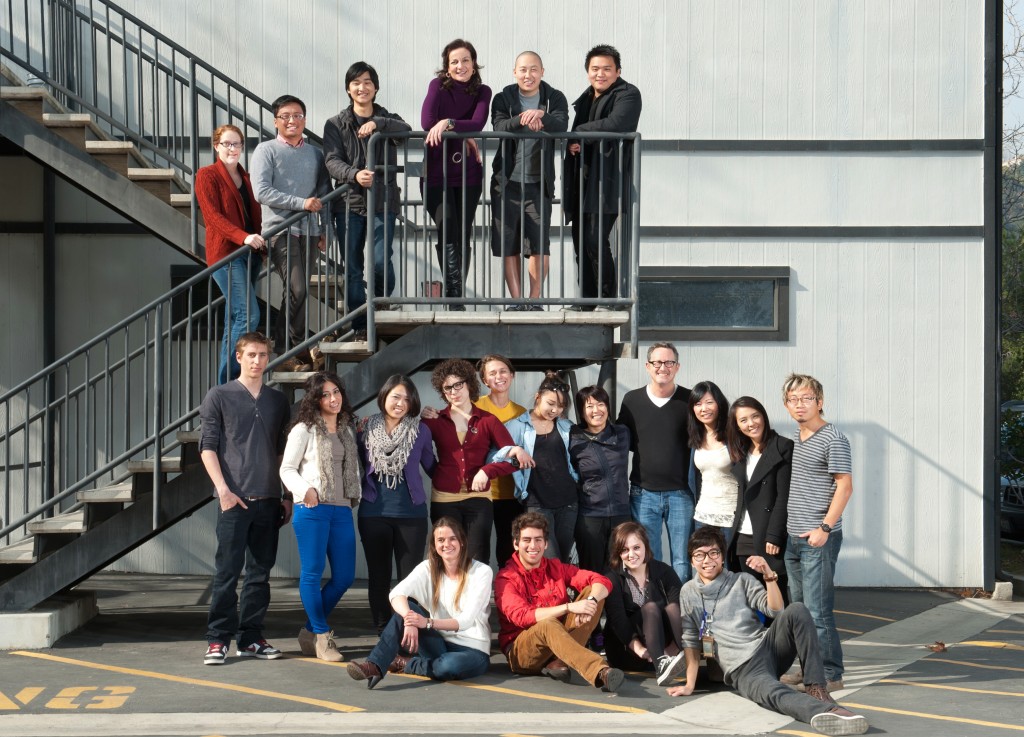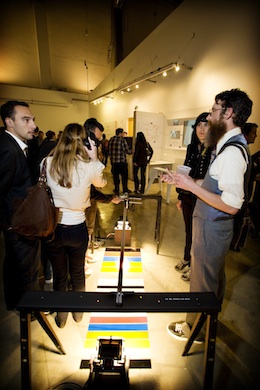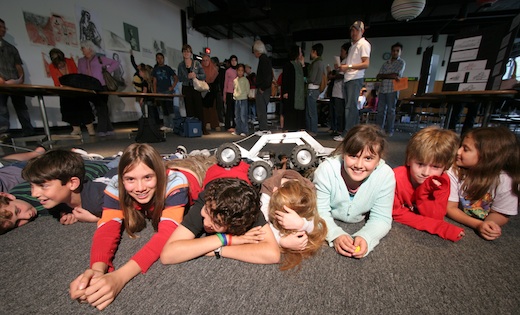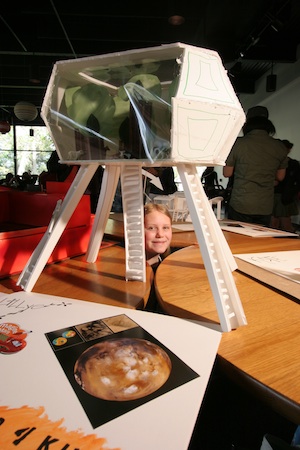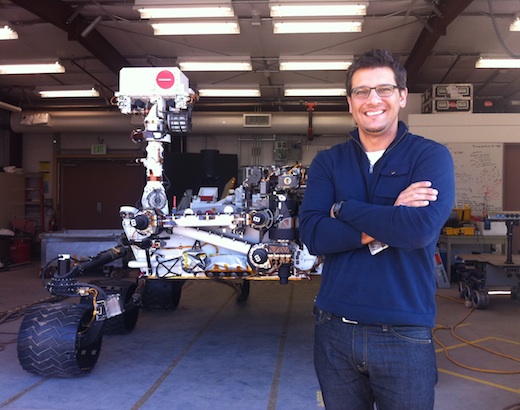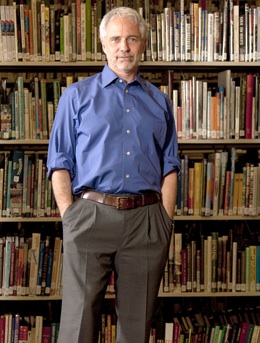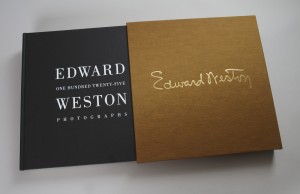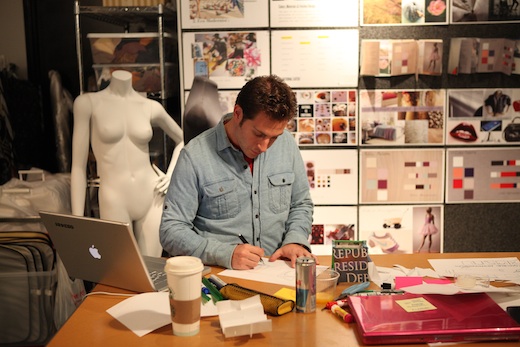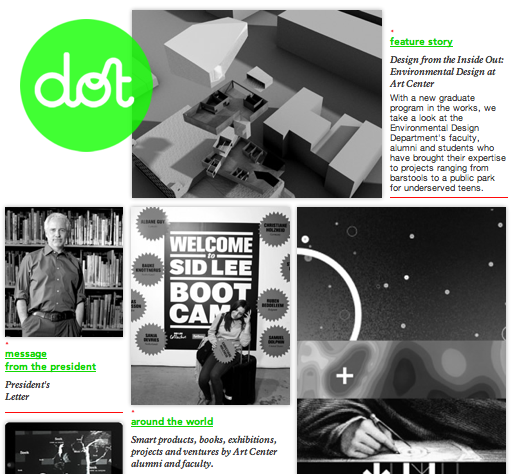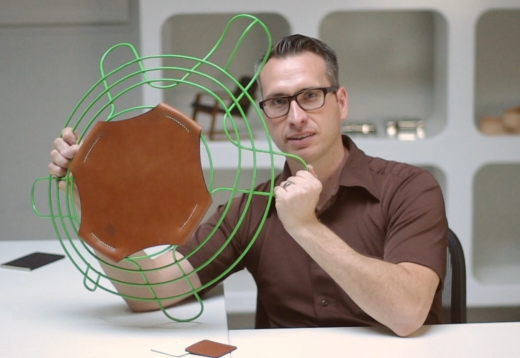
Cory Grosser holding his latest project, a design object for kids called Turtle Turtle.
In the latest issue of Dot, Art Center’s newly reimagined flagship publication, we take a look at the College’s Environmental Design Department and get a sneak peek into the department’s upcoming graduate program. Among the many individuals we interviewed for that story was alumnus and Environmental Design instructor Cory Grosser ENVL PROD ’01, a product designer and brand strategist whose clients include Bentley Motors, MDF Italia, SpHaus, Ford Motor Company and Walt Disney Signature.
Grosser uses narratives to design compelling experiences, as perfectly illustrated in his latest project Turtle Turtle, a sculptural toy he created both for his daughter and for Humanscale’s Faces in the Wild art auction in London earlier this month. At this charity event, artists and designers donated works based on endangered animals with all proceeds benefiting the World Wildlife Fund. Encouraged by the initial response, Grosser recently launched an official Kickstarter campaign to bring the toy into production.
We’re pleased to bring you this extended interview with Grosser and encourage you to get the larger story of Art Center’s Environmental Design program by reading Designing from the Inside Out in the latest issue of Dot.
Dotted Line: What’s your educational background?
Cory Grosser: I have a degree in Architecture from the University of Buffalo and I was an Environmental Design major here at Art Center. I earned a B.S. in “Environmental Product Design,” which was a track they offered for a very short time within the Environmental Design Department. It was a track geared towards students who wanted to learn more about objects within a space. I think there’s only three of us that graduated from that track.
Dotted Line: Speaking of objects within a space, in addition to leading DesignStorms and corporate-sponsored projects, you teach several furniture studios for the Environmental Design Department . How do environmental designers go about designing a piece of furniture?
Grosser: Environmental designers know that the furniture inside of a space has tremendous implications for the way a space feels. If you walk into a totally empty room, it feels a certain way. Now fill the room with furniture. Depending on the type of furniture you place inside, the way the room looks, works and feels will be completely different. Sometimes “furniture” is too small a word. In our department we teach our students to think narratively. We like the objects our students design to tell stories and to engage people through those stories. Furniture is a good way for students to understand how their projects should tell stories, even if it’s a single object. So even if a student isn’t interested in designing furniture for a career, taking a furniture class once could still be beneficial for them.

The theme of Grosser's Piazza America at the 2010 Milan Furniture Faire was "Tell Me Your Dreams."
Dotted Line: Because of that narrative-based approach to tackling projects?
Grosser: That, but also in the furniture class we ask students to think a lot about who they are as a designer. What are they bringing to the table? The reality is that there’s a lot of furniture in the world, and every year there’s more and more. So we ask them to think about the thought processes behind making their furniture and how their work fits into the larger context of other work. All those lessons apply to projects beyond furniture.
Dotted Line: David Mocarski, the Chair of Environmental Design, says that environmental designers focus on the “total spatial experience.” Can you tell me what that means to you?
Grosser: That’s probably the best definition of “Environmental Design” that I’ve heard. The idea behind total spatial experience is that space is about scale. If architecture is the building, and interior architecture is what’s inside, then the total spatial experience can mean everything from the smallest object in the room to the building and even beyond the building. And since it’s experience-based, it’s all about how people feel in the space. Everything can affect the way you feel: lighting, graphics, signage, the materials or even the way the windows work. It’s a very holistic idea and it’s a very large umbrella for our students to explore, so the career options are quite vast.
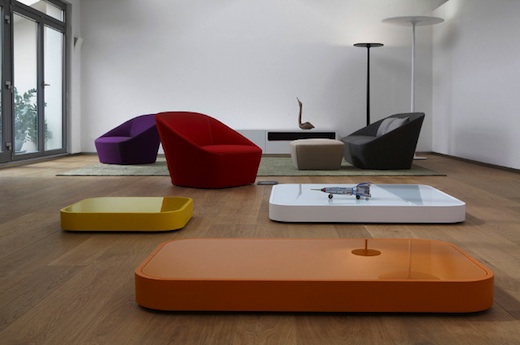
Grosser's Bucket upholstered seating collection for SpHaus was inspired by seats of classic sports cars.
Dotted Line: What kind of changes to the field have you seen since you graduated?
Grosser: Beyond the obvious changes in technology, one of the biggest changes is that designers today have to be more strategic and savvy about what they’re designing. The expectations of the people using their products–whether you call them “consumers,” “clients” or “users”–are growing, and rightly so. So as teachers, we have to teach the students new strategies. Back when I was studying architecture, they referred to this field as “themed space design” or “themed architecture.” Nobody uses that terminology anymore because the field has turned into so much more. The ecosystem of narrative, brand and experience has become much more sophisticated.
Dotted Line: In a sense does the space become just one element of the overall brand?
Grosser: It goes back to that concept of total spatial experience. That can encompass everything from the packaging of the items within the space to what you’re seeing outside as you approach the building to your experience with the product or the website once you get home. Think of when you go to a restaurant. Of course the experience is about the food, but it’s also about the space, the menus, the silverware, how the waitstaff is dressed and what they say when they greet you. It’s a bit like conducting a symphony. We want to teach our students to become conductors, not just players of one instrument.
Beyond Luxury Concept by Cory Grosser for Bentley Motors.
For more about Art Center’s Environmental Design program, see the latest issue of Dot.

